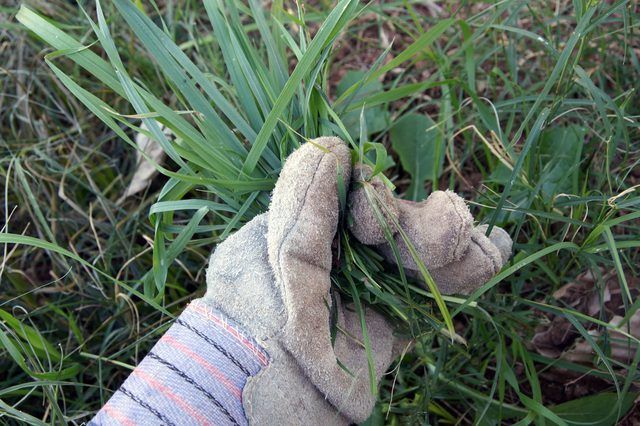Bulbs
Flower Basics
Flower Beds & Specialty Gardens
Flower Garden
Garden Furniture
Garden Gnomes
Garden Seeds
Garden Sheds
Garden Statues
Garden Tools & Supplies
Gardening Basics
Green & Organic
Groundcovers & Vines
Growing Annuals
Growing Basil
Growing Beans
Growing Berries
Growing Blueberries
Growing Cactus
Growing Corn
Growing Cotton
Growing Edibles
Growing Flowers
Growing Garlic
Growing Grapes
Growing Grass
Growing Herbs
Growing Jasmine
Growing Mint
Growing Mushrooms
Orchids
Growing Peanuts
Growing Perennials
Growing Plants
Growing Rosemary
Growing Roses
Growing Strawberries
Growing Sunflowers
Growing Thyme
Growing Tomatoes
Growing Tulips
Growing Vegetables
Herb Basics
Herb Garden
Indoor Growing
Landscaping Basics
Landscaping Patios
Landscaping Plants
Landscaping Shrubs
Landscaping Trees
Landscaping Walks & Pathways
Lawn Basics
Lawn Maintenance
Lawn Mowers
Lawn Ornaments
Lawn Planting
Lawn Tools
Outdoor Growing
Overall Landscape Planning
Pests, Weeds & Problems
Plant Basics
Rock Garden
Rose Garden
Shrubs
Soil
Specialty Gardens
Trees
Vegetable Garden
Yard Maintenance
How to Grow Snap Peas
How to Grow Snap Peas. A relative newcomer to gardening, snap peas (Pisum sativum var. macrocarpon) were developed in the 20th century by crossing the snow pea "Mammoth Melting Sugar" with a mutant of the shelling pea "Dark Skinned Perfection." They combine edible pods with sweet, large peas. Harvest snap peas when the fruits...
A relative newcomer to gardening, snap peas (Pisum sativum var. macrocarpon) were developed in the 20th century by crossing the snow pea "Mammoth Melting Sugar" with a mutant of the shelling pea "Dark Skinned Perfection." They combine edible pods with sweet, large peas. Harvest snap peas when the fruits are nearly mature, with the peas filling out the still crisp and tender pod, and eat them pod and all. Some varieties of snap peas include "Sugar Daddy," "Sugar Snap" and "Super Sugar Mel." These annuals are grown from seed each year, and the tall vines need trellising.
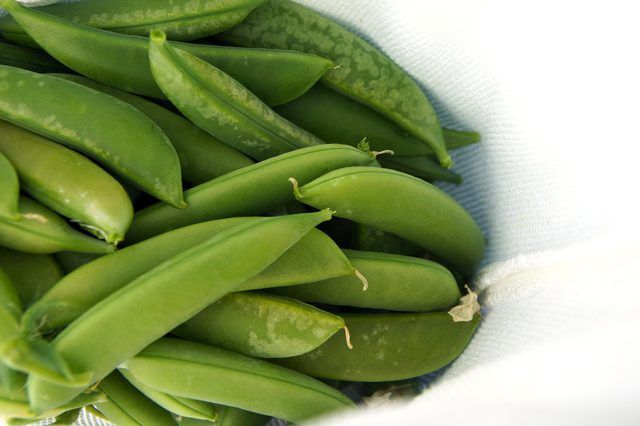
In cold winter climates, plant snap pea seeds about one month before the last frost predicted for your area, and begin harvesting peas in about 60 days. In mild winter climates, you can sow snap peas in late summer for fall harvest. Prolong the harvet by sowing successive plantings about three weeks apart. They can withstand some freezing weather. They don't tolerate heat well and stop growing when temperatures rise above 85 degrees Fahrenheit.
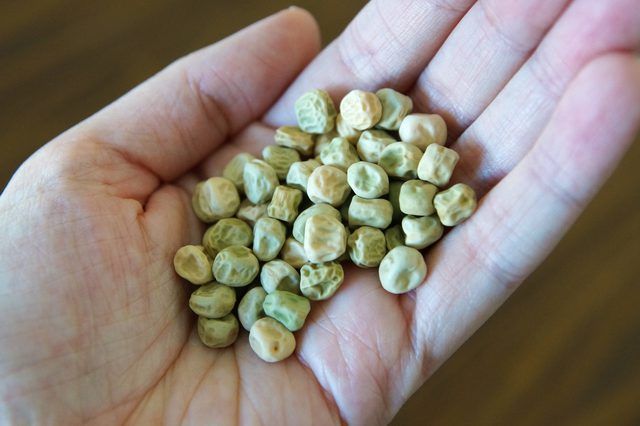
Snap peas need a well-draining soil rich in organic matter. The soil should be loose and have good structure, with a pH of 6.0 to 6.7. Prepare the area before you plant the seeds by digging the soil to at least 10 inches deep. Mix in compost as you dig. Determine where the rows of peas will go and put a trellis down the center of each row. Plant the pea seeds in two rows, one row down each side of the trellis. Make a hole 1 inch deep for each seed and space the seeds 2 inches apart.
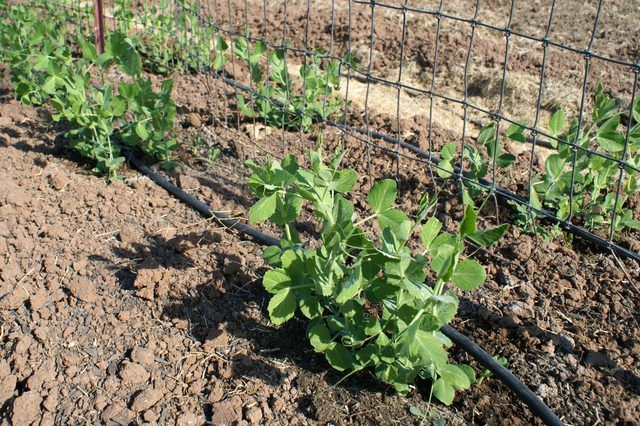
Since snap peas grow during cool, often rainy weather, often you won't need to water them to keep the soil moist. If there is no rain, don't let the soil dry out. Water the peas to a depth of at least 1 inch about once a week, more often in light, sandy soils. Water the soil rather than the plants to prevent diseases. Mulch the plants with a 3- to 4-inch-deep layer of organic material such as straw or grass clippings to conserve soil moisture and prevent weeds.
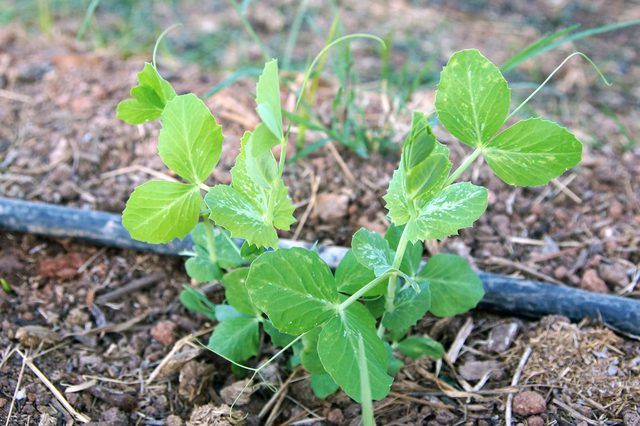
Snap peas, like other members of the bean family, have the highest yields in full sun, but can also tolerate partial shade. Also like their family members, snap peas have nitrogen-fixing bacteria on their roots that make nitrogen available to the plant so they don't need supplemental fertilizers. The compost you mixed into the soil before planting the seeds furnishes enough nitrogen to get the plants started before the bacteria become established on their roots. If you haven't grown peas before in your garden, you may wish to dust the seeds with a rhizobium bacteria inoculant powder before planting them.
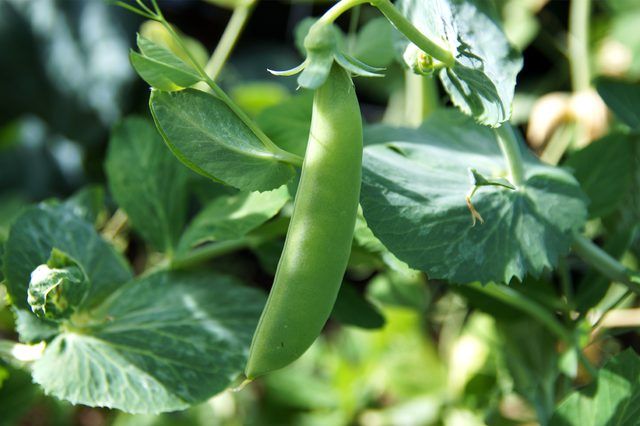
It's important to keep peas weed-free, especially during the first six weeks after germination. However, peas have a network of shallow roots near the soil surface that shouldn't be disturbed by cultivating the soil too deeply. Remove weeds when they are small by hand-pulling or shallow cultivation.
